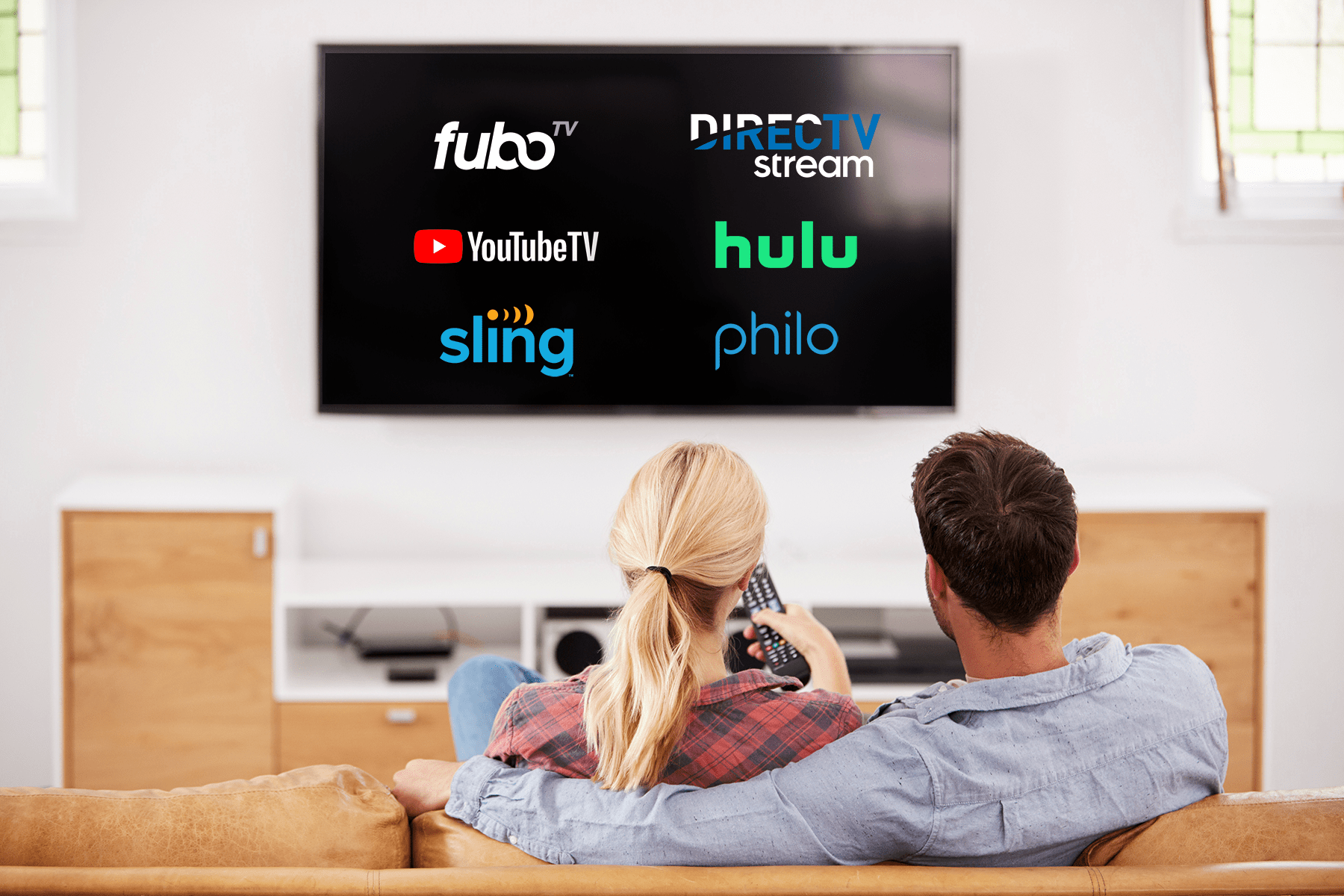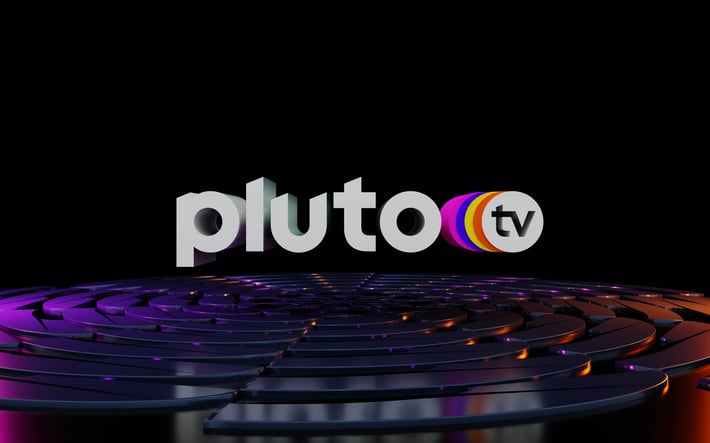- Home
- Strategus Blog
- What Is a vMVPD and Why Should Marketers Care?
What Is a vMVPD and Why Should Marketers Care?
 Traci Ruether
Traci Ruether
9 minutes read

What do you get when you mix traditional pay TV with digital delivery to connected TV (CTV) devices? Virtual multichannel video programming distributors (vMVPDs), of course.
While the acronym is a mouthful, the concept is simple. vMVPDs are streaming services that deliver scheduled TV channels to internet-connected devices. Examples include YouTube TV, FuboTV, and DirecTV Stream.
2023 was a big year for vMVPDs as they grew 12.5% — reaching an estimated 16.3 million households across the U.S. This trend will continue as traditional TV fades into the background. For this reason, marketers and media buyers need to adapt their strategies to account for this growing channel.
Keep reading to learn how vMVPDs compare to other video advertising channels, the advantages of buying ad space on these services, and what’s required to reach cord-cutters in 2024.
What Is a vMVPD?
A vMVPD, or virtual multichannel video programming distributor, is a paid streaming service that gives viewers access to their favorite TV channels without requiring a cable bundle. These services can be accessed on smart TVs, gaming consoles, and set-top boxes like Roku, as well as on mobile devices and computers. Examples include YouTube TV, Sling TV, and Hulu + Live TV — all of which bundle popular TV channels and deliver linear content over the top (OTT).
vMVPDs drive revenue using a mix of subscription fees and ads. The ads are often served on a per-viewer basis, allowing marketers to pinpoint their audience based on demographics and preferences. As a result, households watching the same channel may experience different commercial breaks.
Because more households trade in their expensive cable bundles for streaming alternatives each year, vMVPDs have become one of the next frontiers of TV advertising. The rise of vMVPDs is reshaping the media landscape — requiring marketers to invest in this growing market to reach buyers.
Common vMVPD Features
vMVPDs offer a host of features to incentivize subscribers. These include:
- Skinny bundles: By providing low-cost packages with fewer than 100 channels, vMVPDs offer more personalized and cost-effective options than traditional cable TV operators.
- Premium live content: Platforms like YouTube TV offer access to a wide range of premium live content, including channels like ESPN, MSNBC, CNN, TNT, Comedy Central, and ABC.
- On-demand content and unlimited DVR: While the foundation of vMVPDs is linear channels, many also offer on-demand content, as well as the ability to record and store shows for later viewing.
- Personalization: Personalization features, such as curated content recommendations and targeted commercials based on user preferences, contribute to a more tailored viewing experience. For instance, a gluten-free viewer may see a commercial for a health food store, whereas an expecting mother watching the same channel would see a commercial for a local prenatal wellness clinic.
What Isn’t a vMVPD?
The media landscape has fragmented and grown to include many distinct business models. Countless acronyms now crowd the space — including MVPD, SVOD, and FAST.
Here’s how vMVPDs compare to these lookalike alternatives.
vMVPD vs. MVPD

MVPDs are the forefathers of television advertising. Cable television systems like Comcast Xfinity and satellite providers like Dish Network both fall in this category. With MVPDs, viewers need specialized equipment like a satellite dish or cable box.
MVPDs are also expensive and restrictive, often requiring annual contracts. Their market share continues to decrease each year, being subbed for both vMVPDs and other non-linear services like SVOD (which we’ll cover next).
The biggest difference between vMVPDs and MVPDs is how the content is distributed. With vMVPDs, internet streaming is the name of the game. MVPDs, on the other hand, rely on legacy broadcast technologies like coaxial cable.
Source: nScreenMedia, “Stress on MVPDs and vMVPDs ratcheting up for 2024”
This distinction gives viewers more flexibility. MVPD viewers are only able to access their favorite channels on their cable-connected TV. Meanwhile, vMVPD subscribers have the flexibility to log in anywhere with an internet connection.
Another major difference between the two is how the commercials are served. MVPD advertising is more costly and less targeted than ads that run on vMVPDs because the audience pool is broader. It’s also challenging to measure the results of traditional TV campaigns and optimize efforts based on data.
The number of MVPD subscribers dropped by 10% last year. This trajectory will only continue. And eventually, vMVPDs will be the only pay TV bundles available.
vMVPD vs. SVOD

Subscription video-on-demand (SVOD) services like Netflix are traditionally ad-free and the content is entirely on demand. This is changing, though.
For one, almost every major service now offers an ad-supported tier, making HVOD (or hybrid video on demand) a more accurate classification. Additionally, many SVOD giants are experimenting with live content (including live sports) to supplement their VOD library.
The biggest difference between vMVPDs and SVODs is how the content is consumed. With vMVPDs, viewers lean back for a scheduled broadcast and potentially surf between channels. Meanwhile, SVOD content is hand-selected based on the title rather than the channel airing it.
vMVPD vs. FAST

FASTs are free vMVPDs. Short for free ad-supported streaming TV, FAST services are growing at a breakneck pace. Popular FAST services include Pluto TV, Tubi, and the Roku Channel — with more popping up every day.
The promise of FAST is simple: viewers get free video content with regular commercial breaks. There’s no way around the ads, and the ability to fast-forward or rewind is limited. But the content is free, and most apps don’t even require a login.
vMVPDs and FASTs compete for the same type of viewers and deliver similar content. One key difference is the lack of premium content on FAST channels. If a viewer is trying to access a show premiere or live sporting event, they’re often willing to cough up the cash required to tune into a vMVPD.
Popular vMVPD Providers
Now that we’ve detailed what a vMVPD is, let's look at the top players. The most popular U.S. vMVPDs are:
- YouTube TV
- Hulu Live
- Sling TV
- FuboTV
- Philo
- DirectTV Stream
We can’t provide actual subscriber numbers because Google doesn’t release that information about YouTube TV. But we know that YouTube TV has grown exponentially since gaining the rights to NFL Sunday Ticket, motivating laggards to finally cut the cord.
vMVPD Market Share and Growth Through the Years
Premium tune-in content like live sports will continue to lure viewers to vMVPDs, keeping the traditional TV model relevant (albeit now delivered via streaming).
Even so, fragmentation across the industry means that TV bundles are no longer the end-all-be-all. SVODs like Disney Plus, FASTs like the Roku Channel, and even UGC platforms like TikTok all compete for viewers’ attention — causing consumers to rethink where they spend their time and money.
One thing is certain, though: code cutters now outnumber traditional pay TV users, so advertisers must adapt their media plans to reach these buyers.
According to Colin Dixon of nScreenMedia, “In 2024, the large increase in subscription fees will boost the decline in traditional pay TV from 12% in 2023 to 13% in 2024. It will also slow the increase in vMVPD subscribers from 8% in 2023 to 5% in 2024. The net result will be that 67.3 million homes will have access to the big TV channel bundle via MVPDs and vMVPDs in 2024, a penetration of 51%.”
Advantages of vMVPDs to Marketers
Luckily, the move to CTV advertising is advantageous to marketers. Here are the key benefits when swapping out traditional linear TV for CTV advertising.
- Programmatic targeting: CTV ads are often purchased programmatically, allowing marketers to pinpoint their audience based on hobbies, shopping habits, and more. This democratizes access to TV advertising as the ads are procured on a per-viewer basis.
- Measurement and attribution: This digital nature of vMVPDs provides marketers with an abundance of data, which enables advertisers to correlate marketing expenditure with tangible outcomes. Whether it's tracking online purchases, visits to physical stores, or researching advertised products post-exposure, vMVPDs facilitate robust measurement and attribution strategies.
- Full-funnel retargeting: When advertising on vMVPDs, marketers can use data about the people who see their ads to follow ideal buyers across devices and deliver the best message at each touchpoint. Called CTV retargeting, this drives conversions after initial exposure.
How to Advertise on vMVPDs
The best way to approach CTV advertising — and by extension, advertising on vMVPDs — is from a customer-centric mindset rather than channel-specific. Strategus Co-Founder and EVP Joel Cox explains:
“The power of connected TV from a user experience and marketer standpoint is that you can be audience-centric in your bidding strategy. That means that when viewership moves away from particular apps and content ecosystems, you won’t have a problem.
When done properly, you can continue to engage with your ideal viewers regardless of what they’re watching. CTV lets the data do the heavy lifting and find the audience.”
Taking this type of content-agnostic approach can be a challenge without the right resources, which is why countless brands and agencies rely on Strategus to navigate the CTV landscape.
We connect our clients with 188+ tech and data partners to ensure that their message reaches the right viewers regardless of where they’re tuning in. From there, we curate a vast library of premium inventory across 843 deal IDs, delivering the flexibility to engage viewers everywhere — be it on vMVPDs, FAST apps, or SVOD services.

Traci Ruether is a content marketing consultant specializing in video tech. With over a decade of experience leading content strategy, she takes a metrics-driven approach to storytelling that drives traffic to her clients' websites. Follow her on LinkedIn or learn more at traciruether.com.
Strategus is a managed services connected TV(CTV) advertising agency with over 60,000+ campaigns delivered. Find out how our experts can extend your team and drive the result that matter most.
Talk to an Expert
Table of Contents
Seeking a Custom CTV Strategy That Delivers?
What to read next

Third-Party Data Targeting for CTV: Benefits & Tactics
Third-party data. It’s a term that’s thrown around, and yet few take the time to detail its pros and cons — much less strategies for using...
7 minutes read

First-Party Data Targeting: Benefits and Tactics for CTV Advertising
First-party data is the information that companies collect directly from their customers rather than through intermediaries. Advertisers use this...
10 minutes read

Foot-Traffic Attribution: Tying Ad Impressions to In-Store Visits
The marketing funnel has changed. Today’s shoppers often begin researching products from the comfort of their homes and don’t set foot into a store...
8 minutes read

CTV Attribution: What It Is and How It Works
Connected TV (CTV) viewing is on the rise — and that’s good news for marketers. Not only can CTV ads be precisely targeted to individual households,...
9 minutes read















